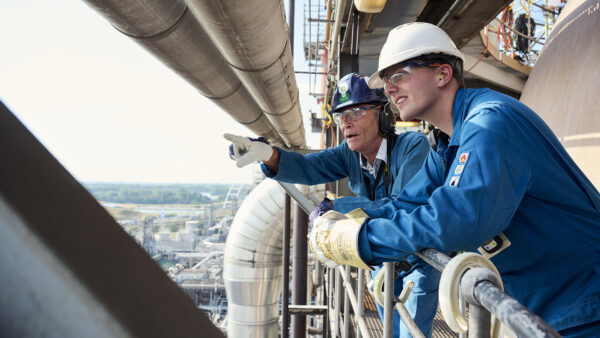Poor H225 performance, but outlook improving
H225 witnessed two headwinds that, though painful, appear to be largely behind the
company. Firstly, the underlying market deteriorated with some projects either being
delayed or cancelled, and secondly, the ‘bridge’ issue surfaced, which has proved
to be costly. As a result, debt has risen materially and the dividend is on hold for
now. However, trading appears to be improving and demand is increasing, as witnessed
by the increasing order book, and the bridge remediation issues are well on the way
to resolution. If trading across the group continues to improve, there is a chance
that both year-end net debt could be lower than we expect and the dividend could be
reinstated, which is what we forecast. Both are likely to lead to improved sentiment
for this market-leading stock.
FY25 results were disappointing, but in line with previous expectations
Severfield’s FY25 results were weak, particularly due to a deterioration in the second
half of the financial year. H1 revenue had increased by c 17%, but by the end of the
period, total revenue fell 2.7% to £450.9m, reflecting lower production activity in
H225 in the Core Construction Operations, the dominant operations of the group. Underlying
operating profit (before JVs and associates) fell by 42.6% to £21.7m, reflecting the
challenging market conditions in H225 that disproportionally affected profit as pricing
came under pressure from excess market capacity.
In addition to the weakness in the core markets, Severfield’s Indian JV also suffered
from pressure on profits as it was hit by delays in existing and expected projects,
which resulted in a sharp decline in the overall output. The effect of the the delays
was felt more sharply as it was some of the largest projects in the record order book
that slipped in terms of timing.
| Exhibit 1: FY25 results summary |
 |
| Source: Company data, Edison Investment Research |
Severfield ended the year with net debt of £43.1m, having started the year with net
debt of £9.4m. The principal outflows in the period included an expected working capital
outflow of £15.6m (unwind of advance payments), bridge remedial costs of £19.6m, capital
expenditure of £6.9m, dividends of £11.2m and £8.6m for the share buyback programme.
The remedial costs, dividends and share buyback total £38.4m of outflows and are not
expected to repeat in the current year, thus removing significant pressure on the
balance sheet.
The company retains c £30m of headroom in its financing arrangements.
Non-underlying items pushed statutory PBT into a loss
Severfield’s underlying PBT fell by 50% to £18.1m, while its statutory loss before
tax was £17.5m (2024: profit of £23.0m). The difference of £35.6m is the sum of a
number of items, with the two largest elements being bridge testing and remedial costs
(net of £20m of insurance recoveries) of £23.4m and £9.1m of other bridge-related
costs.
The latter figure includes ‘a reversal of revenue for certain variation orders’ and
provisions for third-party consequential costs and claims. Severfield is actively
pursuing full recovery of the outstanding receivables and is contesting other elements
of the claims. Both are the subject of ongoing discussion and legal process, implying
that the £9.1m total figure is a worst-case scenario.
In the period, Severfield incurred £19.6m of cash costs relating to the 12 bridge
projects in question, which contributed to the increase in net debt, from £9.4m at
31 March 2024 to £43.1m a year later. In the current financial year, the company expects
to incur cash costs relating to bridge remediation activity of c £20m, which is likely
to be totally offset by the agreed insurance proceeds of a similar figure.
Order book returns to growth
Severfield has seen its total UK and Europe order book slowly decline over the last
two years as projects have been delayed, deferred or even cancelled, and a lack of
large project demand has led to more competition between suppliers and therefore keener
(ie lower) prices for the remaining work. This increased competition has resulted
in the revenue pressure and margin declines that were evident in the results.
However, the outlook is improving and this is reflected in the latest order book,
which as at July 2025 stood at £444m, up from £410m in November 2024. The growth is
well spread with an increase in both the Commercial and Industrial order book, and
the Nuclear and Infrastructure order book. Severfield has secured new orders for industrial
facilities and commercial offices as well as data and distribution centres. There
are also certain megatrends that support the outlook. For example, the green energy
transition implies increasing demand for battery plants, infrastructure for renewables
and energy efficient buildings and the growth in AI is driving increased demand for
data centres.
Furthermore, the current UK government is driving a 10-year infrastructure investment
and renewal programme that is likely to see £750bn invested in areas such as energy,
transport and defence. These plans are at a relatively early stage but should eventually
see demand for steel increase substantially. Other examples of potential non-government
projects include the rebuilding or expansion of sports stadiums, including Old Trafford
(Manchester United), Elland Road (Leeds United) and St James’ Park (Newcastle United).
Severfield has a very strong track record here, having been heavily involved in the
building of Bramley Docks (Everton), the Tottenham Hotspur Stadium and Lords Cricket
Ground.
| Exhibit 2: UK and Europe order book, by period and sector (£m) |
 |
| Source: Severfield, Edison Investment Research |
The Indian JV is currently expanding its capacity from 110,000t to 184,000t, and the
economic outlook is improving, with GDP forecast to grow from £3.5tn in 2023 to £7.5tn
in 2030. This bodes well for the JV, which has seen its order book grow strongly in
the last 12 months even if the actual volume of activity fell in FY25, from 100,000t
to 64,000t. The JV is working on a number of prospects that are not reflected in the
order book, but should result in a further increase in the backlog as the Indian economy
continues to expand.
| Exhibit 3: India order book |
 |
| Source: Severfield, Edison Investment Research |
Net debt set to peak in FY26 and a return to dividends to be considered
Due to the twin effect of weaker markets and the costs of remedial action relating
to the bridge rectification, net debt rose significantly in FY25. However, at the
year-end the £43.1m of net debt reported was c £2m better than we had expected, which
we have fed through our model and is the primary reason why net debt is expected to
be modestly lower in FY26 and FY27 than we had previously expected.
| Exhibit 4: Revised forecasts |
 |
| Source: Severfield and Edison Investment Research |
Despite the elevated debt levels, Severfield has been able to extend its existing
banking arrangements by one year to 2027 and this gives the company banking headroom
of c £30m. In addition, it recently entered into an agreement with its Indian JV partner
to sell up to 24.9% of its 50% stake in the JV to its partner for £20m, potentially
offering Severfield access to further headroom, should the need arise.
The current expectation is that this is a worst-case scenario, with Severfield still
of the view that India offers long-term value-creation opportunities given the strength
of the JV, the rapid growth expected in the Indian economy and the recent expansion
of the capacity of the JV.
That said, Severfield passed on the final dividend for FY25, implying a total payment
of 1.3p per share for the year, compared to 3.7p per share paid in respect of FY24.
We understand that management’s intention is to return to paying a dividend as soon
as practically possible. Given that the order book is picking up and the opportunities
further out look exciting, there is a chance that Severfield may declare an interim
dividend, though we believe it is more likely that the board will wait until the full
year to consider a dividend declaration. We are currently forecasting a 1.5p per share
dividend in respect of FY26, which implies dividend cover of 1.7x on an underlying
basis. This 1.5p per share dividend implies a cost of £4.4m and is included in our
FY27 net debt estimate of £38.7m.





















